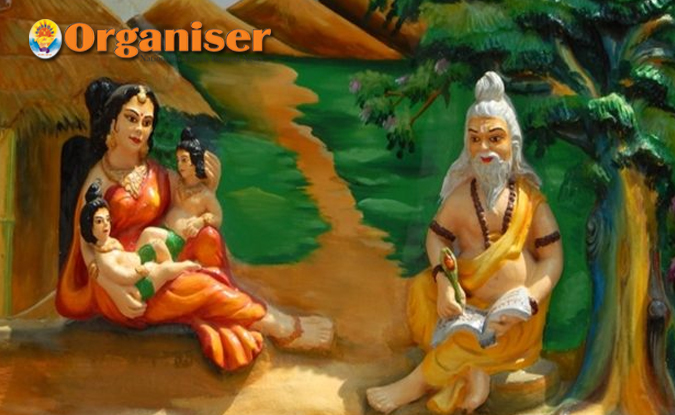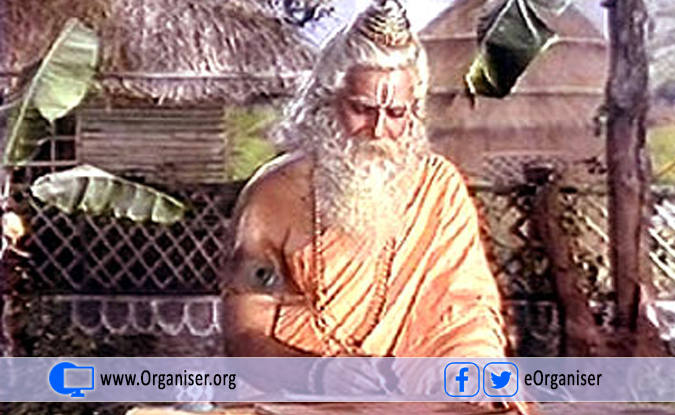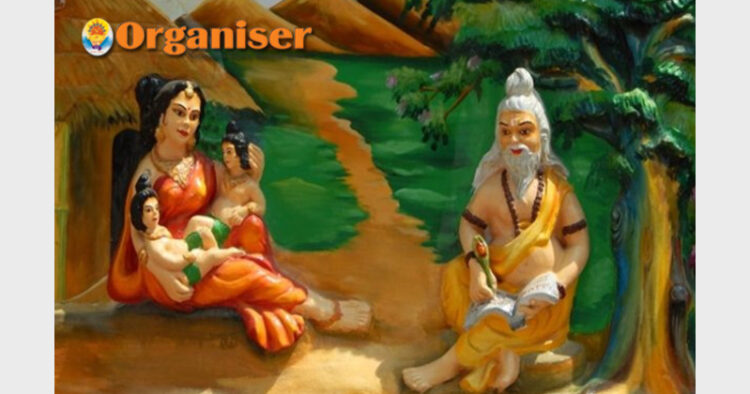Who is Valmiki, this great sage, whose kavya, in its many recastings, continues to pervade the consciousness of Bharat so completely, which strings together this great desh and informs its darshan so entirely?

Maa Sita with infant Lav and Kush at the Ashram of Maharsi Valmiki (Representational Image)
Valmiki, known popularly as the first (Adi) kavi and the composer of the Sanskrit Ramayana, is a maharsi, or a great seer. This term says something about the special status of both Valmiki as well as the Ramayana in the Indian tradition. The term rsi means one who ‘sees’ the mantras. That, and the fact that he is also, at once, a poet, tells us that the Ramayana exists at the juncture between the divine and the human, also evidenced by the simultaneously twofold nature of its protagonist, Purusottama Rama, son of Dasaratha.
The status of Valmiki as the first poet and the composer of the ‘first’ Ramayana is not merely a chronological fact. In recent decades, much has been made of the multiplicity and diffuse nature of the Ramakatha tradition, and of the possible chronological precedence of other Ramayanas over the Valmiki version, as also of the various layers within the Valmiki Ramayana.
| Left-liberal historians tend to focus on the latter half of the Ramayana, on the circumstances of Sita’s abduction and the war to rescue her and interpret it through various lenses as patriarchy and as a narrative around power |
However, a more careful understanding of the Ramayana traditions in India demonstrates a different process. The Ramayana becomes the story that is retold across languages and genres, both as the originary story which renders these traditions literary as well as for the love of its characters and themes.
Across much of this retelling, even when it differs greatly from the recension of Valmiki’s Ramayana the authors are familiar with at any given time, Valmiki is invoked as the first author of the Ramayana, and simultaneously as the first kavi. What does this invocation mean, particularly without any special adherence to Valmiki’s version? It seems to invoke again the sense of the rsi, who ‘saw’ the mantras, and who must be invoked even when they are re-seen in a different form. Valmiki is also regarded as the author of Ramayanas which deal with other aspects of the Rama story, suggesting that he is widely understood as the one who renders the Rama story in a form which makes it accessible to humans, in all its different aspects.

A portrayal of Maharsi Valmiki in Ramanand Sagar’s popular serial Ramayana
Vamiki for Today
Who is Valmiki, this great sage, whose kavya, in its many recastings, continues to pervade the consciousness of Bharat so completely, which strings together this great desh and informs its darshan so entirely? And why should we, in 2018, care for him? Valmiki stands for the majestic splendour of the name ‘Rama’, and for a societal ideal that is based on an notion of the ‘self’ which is transformed through sadhana. And he stands for the ideal that is expressed in his great poem.
Left-liberal historians tend to focus on the latter half of the Ramayana, on the circumstances of Sita’s abduction and the war to rescue her, and interpret it through various lenses as patriarchy and as a narrative around power.
The Ayodhyakanda, however, is where any sense of a narrative of power is already subverted; the sage’s moving description of Sri Ram’s departure from Ayodhya, and his conversations before it demonstrate an ideal greater than the possessiveness inherent to the base aspects of human nature. And it is a combination of these two that India needs to embrace in order to lead the world into a new age, one whose understanding of interpersonal and international relations are transformed in the sense Sri Aurobindo implies, through the impossibility of violence, rendered so through sadhana of Rama, and the Rama-like qualities the great seer-sage wrote of; India needs to fall at Maharsi Valmiki’s feet and seek to comprehend














Comments